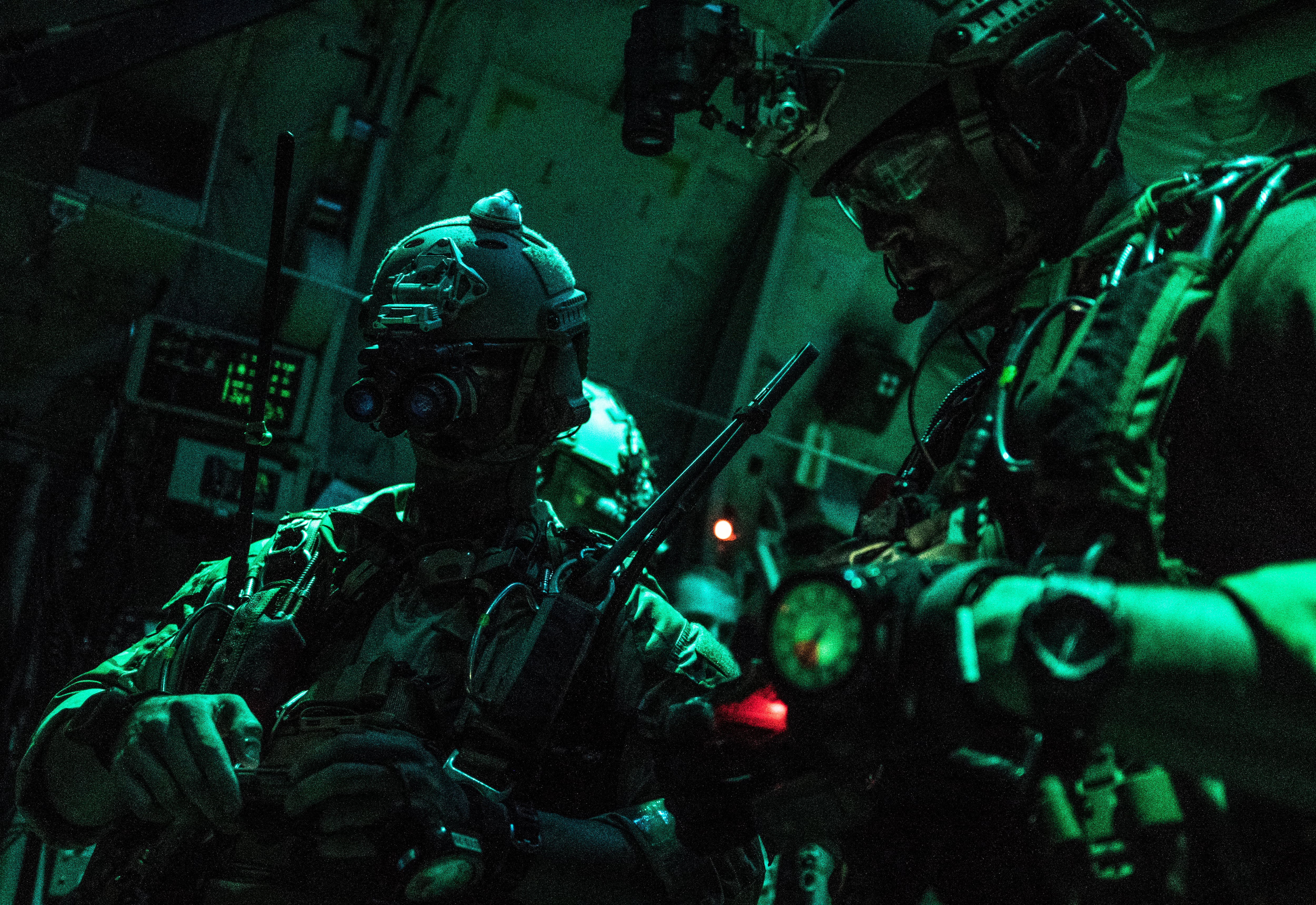Following a fatal military free-fall accident last spring, all full mission profile jumps conducted by Army special operators must utilize radios, and the 75th Ranger Regiment had to codify a standard for assisting jumpers who are unable to make it to drop zones.
That’s according to recommendations approved in November by Lt. Gen. Francis M. Beaudette, who helms the service’s special operations command. The recommendations were included in a mishap investigation obtained by Army Times this week.
The changes came after it took nearly two hours to locate Sgt. 1st Class Ethan Carpenter, an Army Ranger assigned to the regiment’s Special Troops Battalion who died after a nighttime high-altitude-high-opening, or HAHO, accident on March 15, 2019.
It’s unlikely an earlier recovery would have saved him, but had the Ranger’s injuries been less severe, that time “could have made the difference between life and death,” according to the mishap investigation.
The final report also called into question how the malfunctioning parachute was packed and recommended the 75th Ranger Regiment review whether there should be more oversight when parachute packing is assisted by civilian contractors, as it was on the day of the fatal mishap.
Carpenter’s parachute was not at issue during his fatal jump over Kodiak Drop Zone, in Arizona. Instead, a second jumper experienced a premature brake line release and collided with Carpenter mid-air.
It’s not clear who packed the malfunctioning parachute. And while the training and certifications of the riggers and civilian packers involved that day were well-documented, “it seems highly unlikely that a brake line would spontaneously come unstowed — as experienced — had a parachute been packed and checked to standard,” the investigating officer wrote in their final report.
Finding Carpenter would also have been easier had all the jumpers used radios that night. While the jump was combat equipped with oxygen masks and NVGs, not all had communications equipment.
“No fewer than four personnel noticed a jumper (now known to be SFC Carpenter) flying his canopy in the wrong direction, contrary to what was planned, briefed, and expected, on his way to conduct an off-drop zone landing,” the investigator wrote. “None of the personnel who noticed these events reacted to the information they observed."
Radios would’ve allowed jumpers in the stack to realize Carpenter was unresponsive when he didn’t check in after deploying his canopy. Radios also would’ve allowed the other Ranger who collided with Carpenter to report the incident. Finally, the equipment could’ve helped one of the jumpers coordinate leaving the stack to follow Carpenter on his descent, landing beside him and flagging searchers earlier.

The jumper with the malfunction collided with Carpenter after a premature brake line release on his Military Javelin parachute rig sent him into an unexpected turn. That soldier, who the investigator said was “at no fault," identified the issue and righted his canopy. But by the time he had done so, it was already too late.
Because it’s not clear which injuries Carpenter sustained in the collision versus when he landed, “it’s impossible to determine with any degree of certainty” how long he lived, the investigator said, citing opinions from the Pinal County and military medical examiners.
Even if they had found Carpenter alive, he would have needed a blood transfusion and immediate surgical attention, the investigator said, neither of which could’ve occurred at the scene of the accident.
The investigation does not say the Rangers’ exit altitude. However, military parachutists begin using supplemental oxygen above roughly 10,000 feet and HAHOs can be performed up to the cruising altitude of a commercial airplane. During a HAHO, jumpers sometimes activate their main parachute mere seconds after exiting the aircraft in order to extend their time under canopy to travel over great distances.
The investigator’s recommendations that were signed off this fall have since been implemented, officials said.
“Army Special Operations Command has ensured that standard operating procedures have been codified for both radio communication during full mission profile Military Free Fall operations and for the use of tracking systems for off drop zone jumpers,” said command spokesman Lt. Col. Loren Bymer.
The investigation Army Times obtained began in early August 2019 and was actually a continuation of an earlier investigation. Beaudette dispatched the second investigating officer to answer more questions, including how long it took to find Carpenter and what medical treatment was provided to him.
Because of the time between the first and second inquiries, some questions were impossible to answer, including who packed the malfunctioned parachute.
“It is worth noting that while some level of inquiry into who packed SFC Carpenter’s parachute is apparent in the initial investigation, there is no follow-up as to who packed [the other] parachute — the one that experienced the partial malfunction and the ultimate cause of the collision,” the investigating officer wrote. “I was unable to collect additional information regarding parachute packing after the fact."
A similar problem arose through the use of civilian medical examiners, who typically only establish a cause of death and determine whether the fatality was the result of homicide or some other cause. Military medical examiners, however, document injuries in greater detail to better inform investigations.
“In this particular instance, had the [Armed Forces Medical Examiner] been contacted to assist with the autopsy of SFC Carpenter, the severity of injuries and mechanisms of injuries would have been better documented and would have led to more definitive answers,” the investigator concluded.
Kyle Rempfer was an editor and reporter who has covered combat operations, criminal cases, foreign military assistance and training accidents. Before entering journalism, Kyle served in U.S. Air Force Special Tactics and deployed in 2014 to Paktika Province, Afghanistan, and Baghdad, Iraq.




